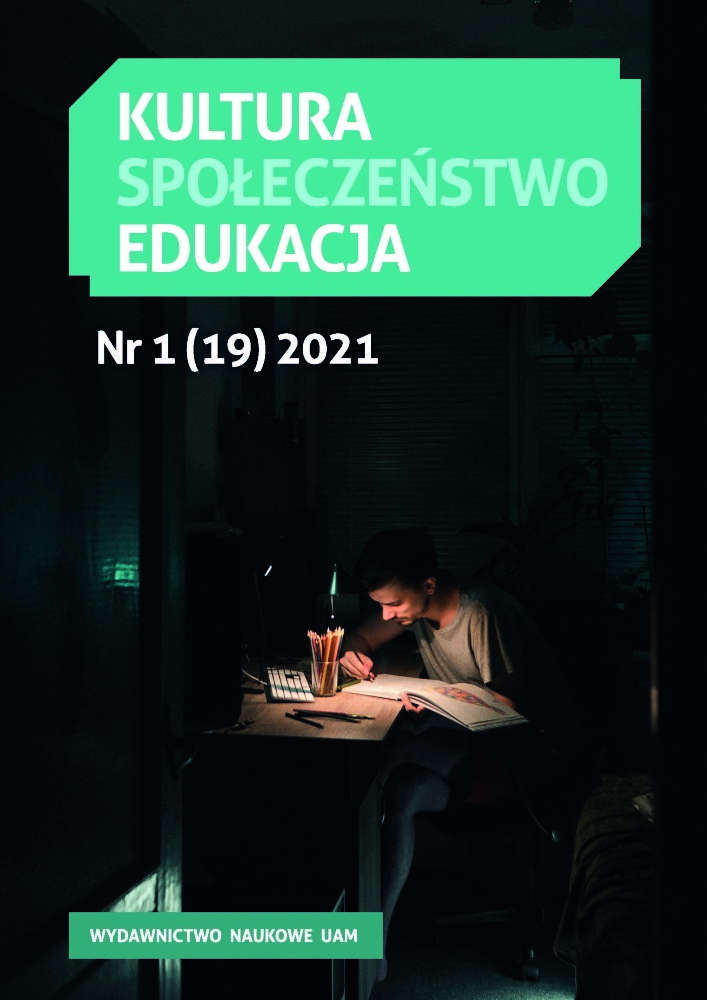Abstrakt
The product of quality TV, modern TV series have undergone significant changes compared to traditional productions. TV series used to have a closed episodic structure, contained within a single episode. These days, the format marked by a narrative continuity prevails. The types of sequences that open TV series have changed, too. Filmmakers employ various ‘opening strategies’ to make their productions stand out and attract audiences’ attention. The initial scenes highlight dynamic action, set the tone and express the central conflict. Other types of opening aim to explicate the main protagonist to make them intriguing. This article will provide the definition of ‘opening scenes’, and their typology will be discussed based on selected examples.
Bibliografia
Bal M. (1985), Narratology: Introduction to the Theory of Narrative, Toronto.
Bordwell D., Thompson K. (2011), Film Art: An Introduction, Warszawa.
Calvisi D. (2016), Story Maps: TV Drama. The Structure of the One-Hour Television Pilot, Los Angeles.
Douglas P. (2007), Writing the tv drama series, second edition, Los Angeles.
Egri L. (1972), The Art of Dramatic Writing, New York.
Hauge M. (2014), Story structure: The 5 Key Turning Points of All Successful Screenplays, https://www.storymastery.com/story/screenplay-structure-five-key-turning-points-successful-scripts/, accessed: 10.04.2020.
Helman A. (1991), Za co kochamy i dlaczego nienawidzimy seriali. Kino, no. 5, pp. 18–20.
Hendrykowski M. (2017), Scenariusz filmowy. Teoria i praktyka, Poznań.
Karpiński M. (2006), Niedoskonałe odbicie, Warszawa.
Kozłowski K. (2018), Internet przegonił telewizję, ale czy naprawdę powstaje za dużo seriali? Rekord znów pobity, https://antyweb.pl/ile-seriali-w-2018-rekord/, accessed: 23.03.2021.
Kubicki M. (2017), https://www.youtube.com/watch?v=wv7J2Y8qAsc, accessed: 23.03.2021.
Mastercard (2018), https://newsroom.mastercard.com/eu/pl/press-releases/polscy-kinomani-przywiazuja-duza-wage-do-pierwszej-sceny-filmu-najbardziej-pamietaja-te-z-titanica/, accessed: 23.03.2021.
McGrath Ch. (1995), The Triumph of the Prime-Time Novel, New York Times Magazine, 22.10, p. 7.
Mittell J. (2006), Narrative Complexity in Contemporary American Television, The Velvet Light Trap, 58, pp. 29–40.
Mittell J. (2015), Complex TV. The Poetics of Contemporary Television Storytelling, New York.
Ostaszewski J. (1999), Film i poznanie, Toronto.
Ostaszewski J. (2019), Historia narracji filmowej, Kraków.
Plesnar Ł. (1990), Sposób istnienia i budowa dzieła filmowego, Kraków.
Schutte O. (2015), Sztuka czytania scenariusza, transl. by M. Borzęcka, A. Głowska, Łódź.
Screenwriter-to-screenwriter.com (2009), http://www.screenwriter-to-screenwriter.com/2009/07/screenplay-the-importanceof-the-first-five-pages/, accessed: 23.03.2021.
Smethurst W. (2009), How to Write for Television, Oxford.
Souriau É. (1976), Czym jest sytuacja dramatyczna? Pamiętnik Literacki: czasopismo kwartalne poświęcone historii i krytyce literatury polskiej, 67/2, pp. 270–286.
Ślebarska K. (2014), Psychologia i film, [in:] M. Brol, A. Skorupa (eds.), Psychologiczna praca z filmem, Katowice, pp. 43–74.
Thompson K. (2003), Storytelling in Film and Television, Cambridge.
Thompson R. (1997), Television’s Second Golden Age: From Hill Street Blues to ER, New York.
Licencja
Prawa autorskie (c) 2021 Artur Borowiecki

Utwór dostępny jest na licencji Creative Commons Uznanie autorstwa – Bez utworów zależnych 4.0 Międzynarodowe.

